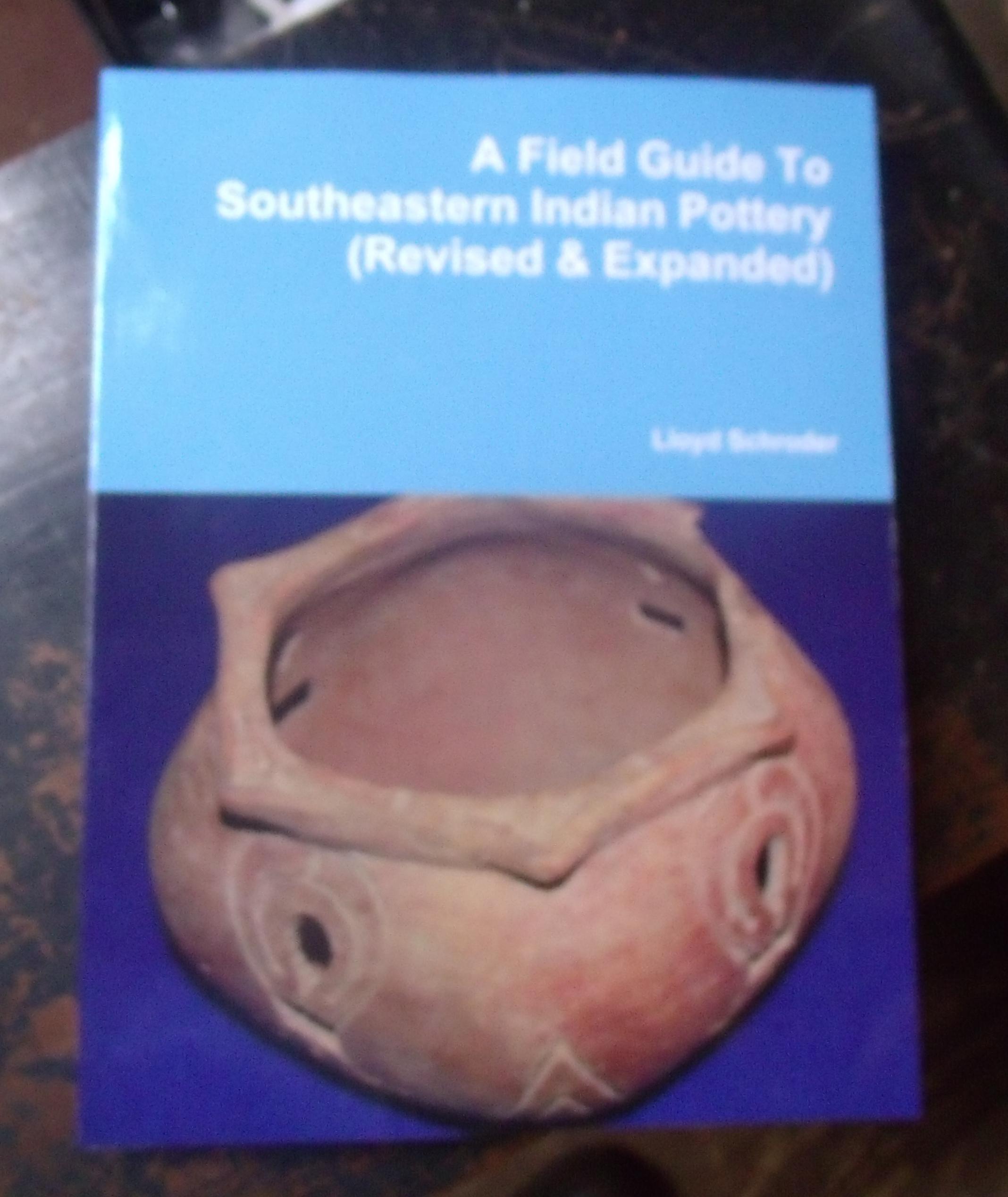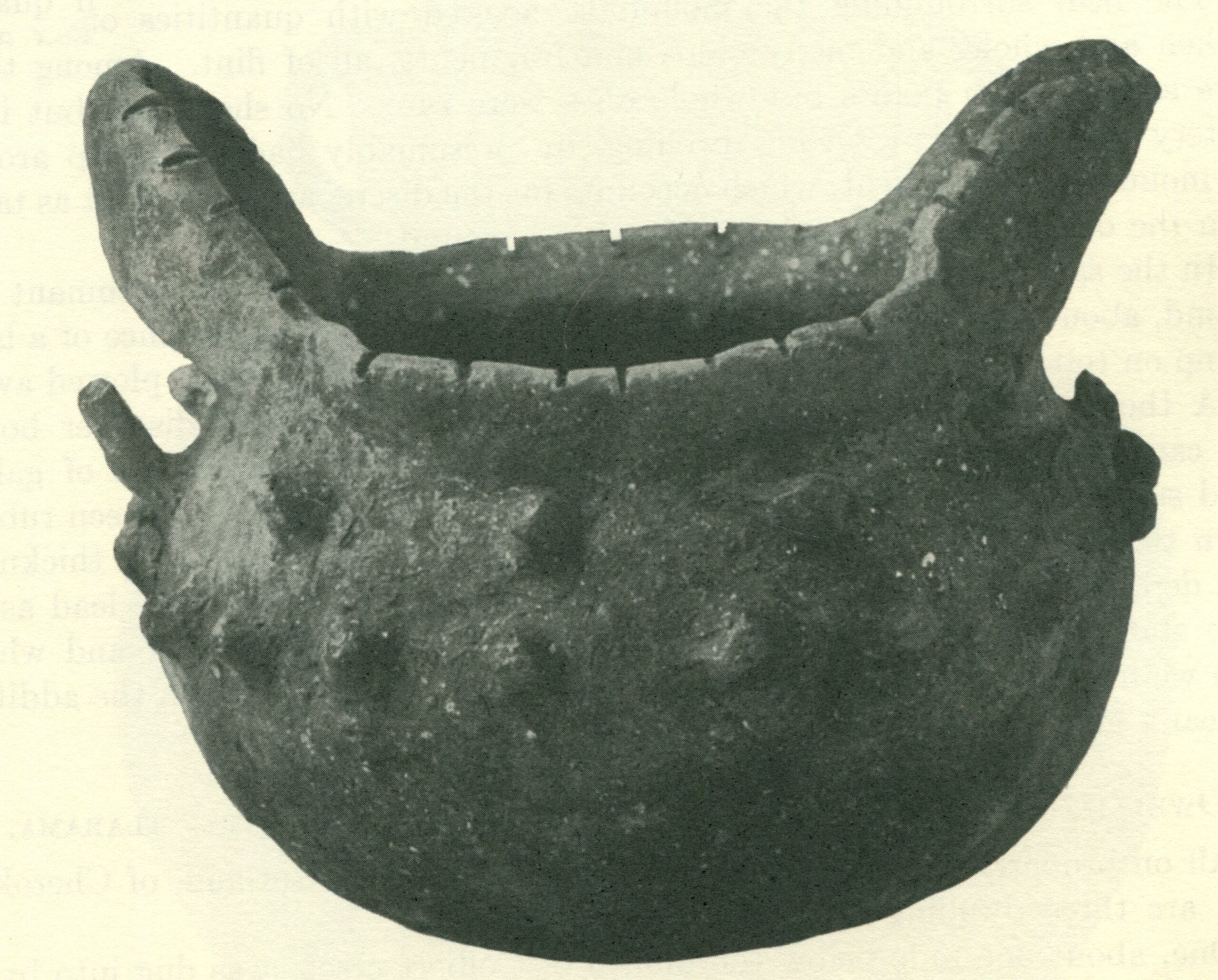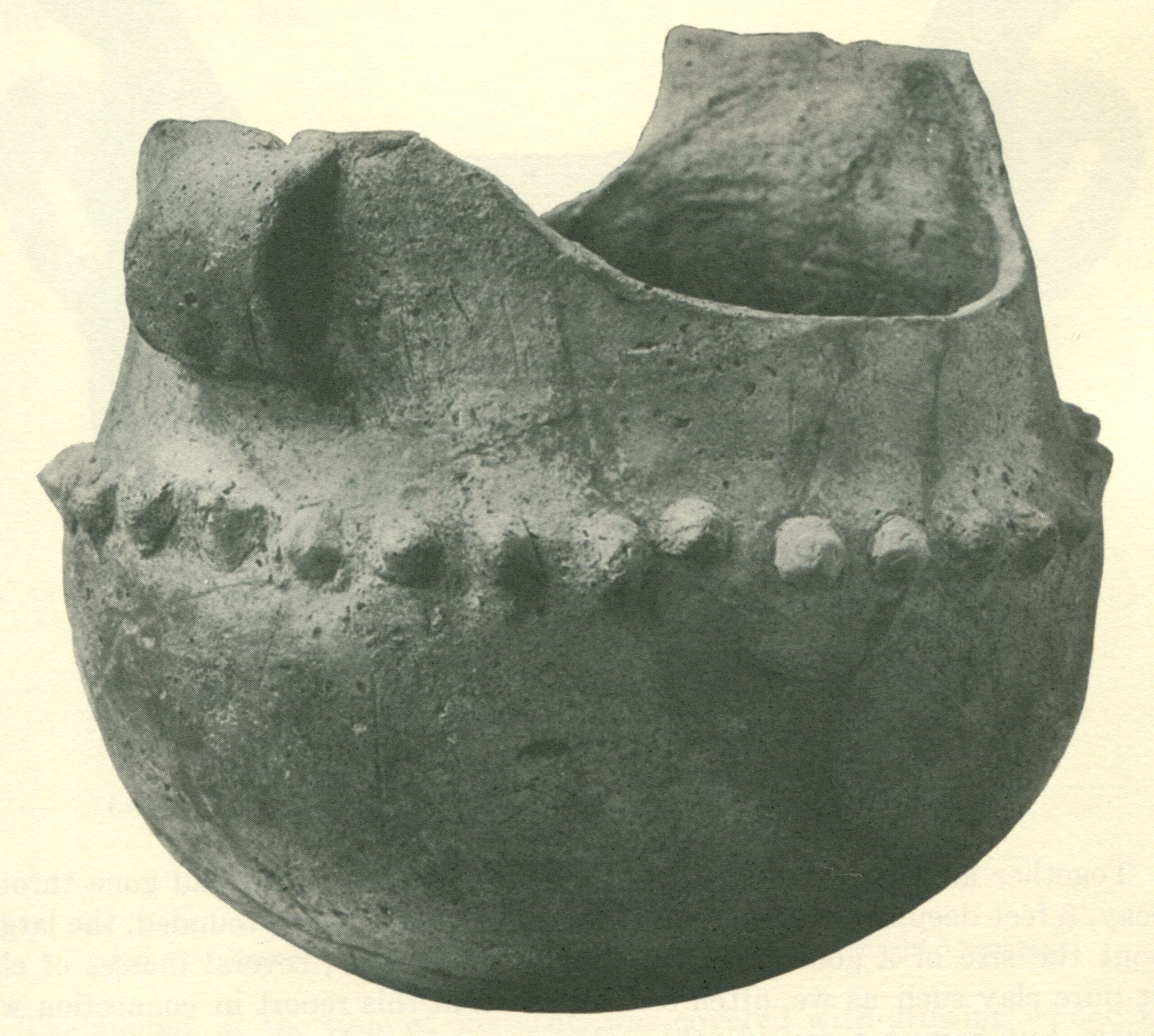For more detailed information on these and other pottery types within the Southeastern United States, please see our “Publications” page to order Lloyd Schroder’s Field Guide to Southeastern Indian Pottery (Revised & Expanded).
This amazing new book contains over 500 pottery types, each explained in very readable terms with thousands of illustrations and maps of distribution. The volume has earned the acilades of senior archaeologists like David Anderson of the University of Tennessee and well-known Georgia archaeologist Jerald Ledbetter. No serious student of archaeology should be without it.

(Left) Private collection, Alabama, (Right) Collection of the Museum of Southeastern Indians, Oconee River, Georgia





C.B. Moore 1915 Fig. 25, 31, 32, 33, and 34
RESEARCH: Available research on this type has been allusive. These have long been referred to by collectors as “saddle pots” and the Creek name is added to identify its apparent cultural association. C.B. Moore recovered sever examples, five of which he illustrated in his Aboriginal Sites on Tennessee River in 1915. The first example was recovered at Baugh’s Landing in Lauderdale County, Alabama. The site consisted of a slight rise, in the center of which were 25 burials, all less than 4 feet deep, which consisted of pottery fragments and bits of bone. These shallow burials were above an earlier midden site. Vessel A (above) was with burial 9. Other vessels included in the burials were a water bottle with interlocking scrolls and wide-mouthed jars with loop handles. Example B was recovered from a child burial in a low mound on Gilchrist Island in Colbert County, Alabama with little else. Vessel C was recovered from a low mound burial on Tick Island in Lawrence County, Alabama containing a nugget of galena and two plain vessels. Vessel D came from burial 4 as well as one undecorated example not illustrated by Moore. A final example (vessel E) is from another low mound burial at Sycamore Landing in Lawrence County, Alabama. All burials were in low mounds and were shallow.
TEMPER: Moore noted that vessel A was tempered with coarse shell. Surfaces seem to be poorly smoothed.
SURFACE DECORATION: The surface is plain or is decorated with appliqué nodes that are placed along the rim and/or in single or multiple rows along the upper portion of the body.
VESSEL FORM: This unusual vessel is globular with two extensions at either side of the orifice. Appendages are consistently loop handles. Rims are rounded or notched and bases are rounded.
CHRONOLOGY: These vessels have consistently been associated with shallow, seemingly secondary burials that have been injected into midden deposits or other elevated features. Their recovery along the Tennessee River in northwestern Alabama and along the Oconee River in central Georgia suggests an association with the upper and lower towns of the Creek federation. Associated ceramics with interlocking scrolls also suggest this relationship during the Late Mississippian and early Historic Dallas phase between 1300 and 1650. The Muskogean-speaking Creek people dominated the Southeast until the 1600’s during which time these vessels seemed to appear.
GEOGRAPHIC DISTRIBUTION: The area of distribution for this type seems to focus on the region of the upper Creek towns along the Tennessee River in northwestern Alabama and the lower Creek towns along the Oconee River in Central Georgia.